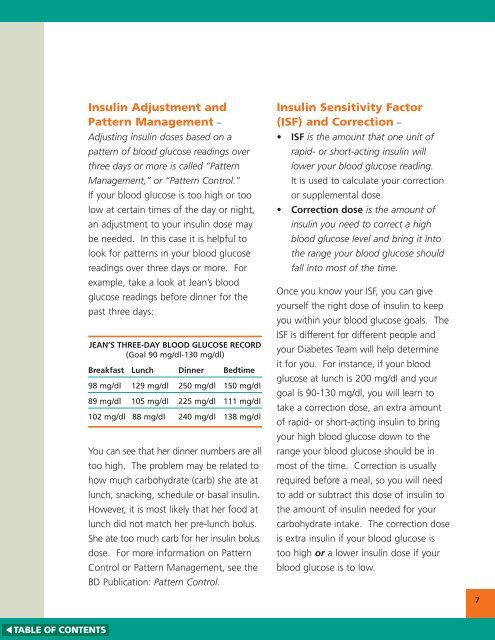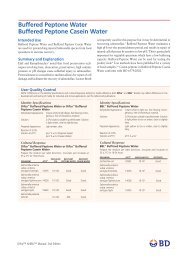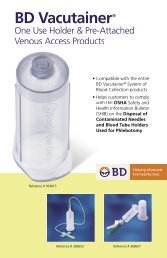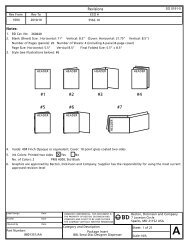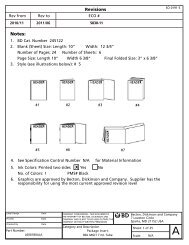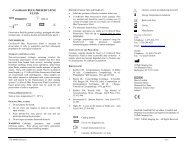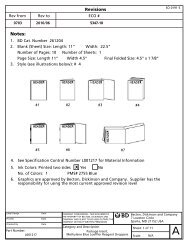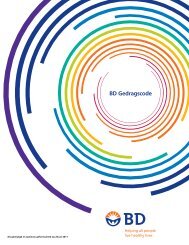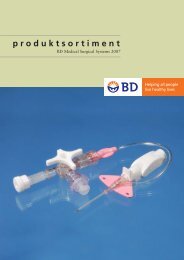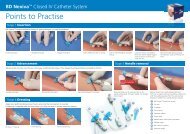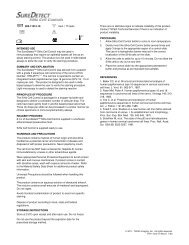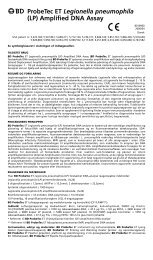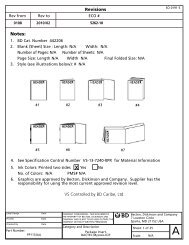Create successful ePaper yourself
Turn your PDF publications into a flip-book with our unique Google optimized e-Paper software.
<strong>Insulin</strong> <strong>Adjust</strong>ment and<br />
Pattern Management –<br />
<strong>Adjust</strong>ing insulin doses based on a<br />
pattern of blood glucose readings over<br />
three days or more is called “Pattern<br />
Management,” or “Pattern Control.”<br />
If your blood glucose is too high or too<br />
low at certain times of the day or night,<br />
an adjustment to your insulin dose may<br />
be needed. In this case it is helpful to<br />
look for patterns in your blood glucose<br />
readings over three days or more. For<br />
example, take a look at Jean’s blood<br />
glucose readings before dinner for the<br />
past three days:<br />
JEAN’S THREE-DAY BLOOD GLUCOSE RECORD<br />
(Goal 90 mg/dl-130 mg/dl)<br />
Breakfast Lunch Dinner Bedtime<br />
98 mg/dl 129 mg/dl 250 mg/dl 150 mg/dl<br />
89 mg/dl 105 mg/dl 225 mg/dl 111 mg/dl<br />
102 mg/dl 88 mg/dl 240 mg/dl 138 mg/dl<br />
You can see that her dinner numbers are all<br />
too high. The problem may be related to<br />
how much carbohydrate (carb) she ate at<br />
lunch, snacking, schedule or basal insulin.<br />
However, it is most likely that her food at<br />
lunch did not match her pre-lunch bolus.<br />
She ate too much carb for her insulin bolus<br />
dose. For more information on Pattern<br />
Control or Pattern Management, see the<br />
<strong>BD</strong> Publication: Pattern Control.<br />
<strong>Insulin</strong> Sensitivity Factor<br />
(ISF) and Correction –<br />
• ISF is the amount that one unit of<br />
rapid- or short-acting insulin will<br />
lower your blood glucose reading.<br />
It is used to calculate your correction<br />
or supplemental dose.<br />
• Correction dose is the amount of<br />
insulin you need to correct a high<br />
blood glucose level and bring it into<br />
the range your blood glucose should<br />
fall into most of the time.<br />
Once you know your ISF, you can give<br />
yourself the right dose of insulin to keep<br />
you within your blood glucose goals. The<br />
ISF is different for different people and<br />
your Diabetes Team will help determine<br />
it for you. For instance, if your blood<br />
glucose at lunch is 200 mg/dl and your<br />
goal is 90-130 mg/dl, you will learn to<br />
take a correction dose, an extra amount<br />
of rapid- or short-acting insulin to bring<br />
your high blood glucose down to the<br />
range your blood glucose should be in<br />
most of the time. Correction is usually<br />
required before a meal, so you will need<br />
to add or subtract this dose of insulin to<br />
the amount of insulin needed for your<br />
carbohydrate intake. The correction dose<br />
is extra insulin if your blood glucose is<br />
too high or a lower insulin dose if your<br />
blood glucose is to low.<br />
7


